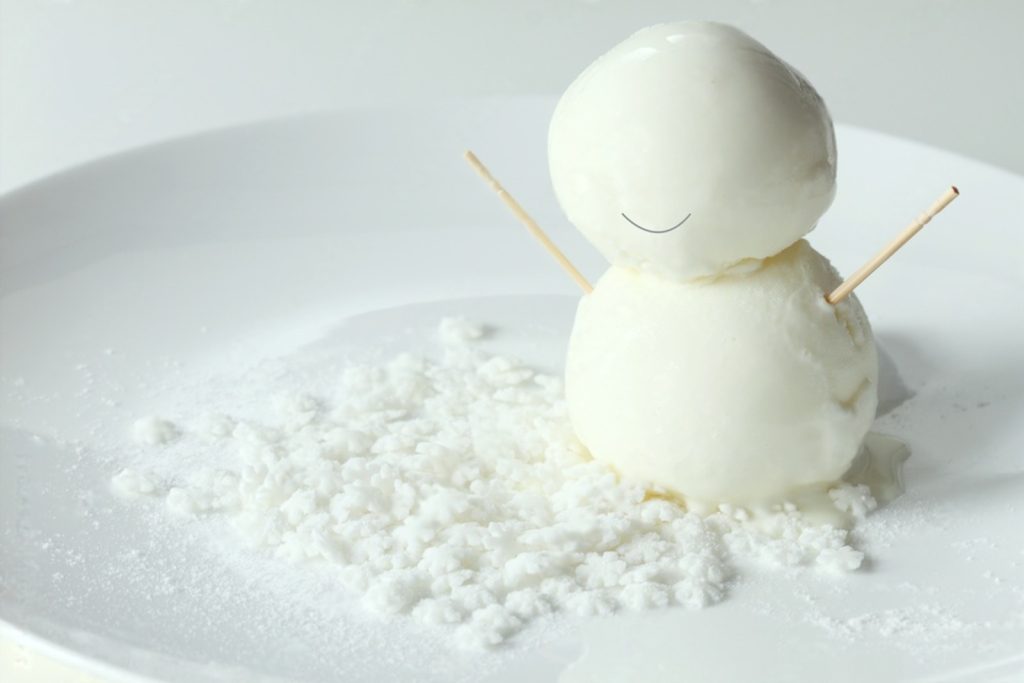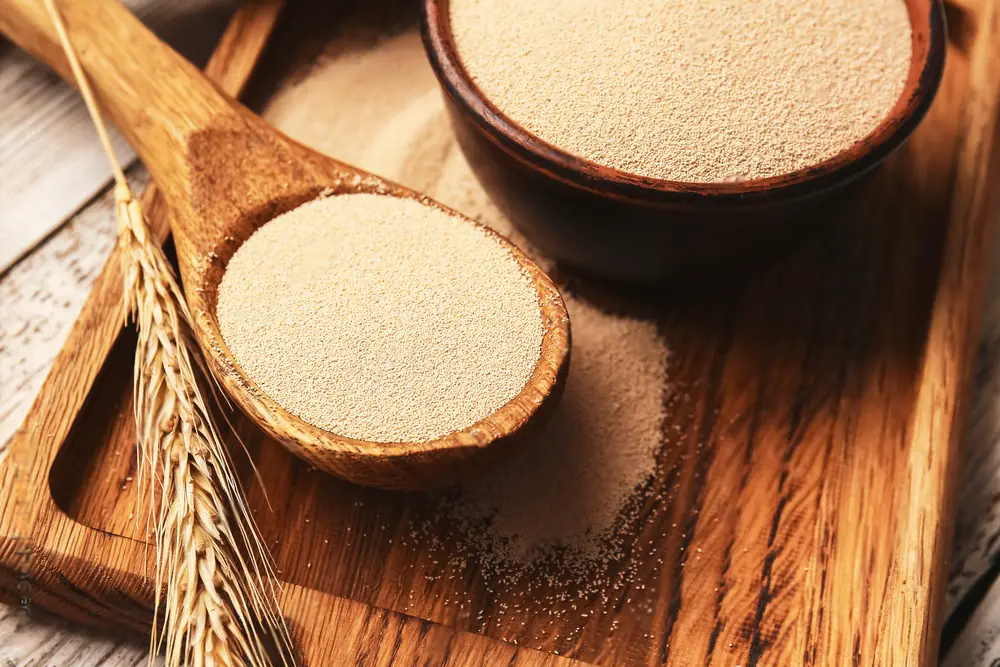
Methi seeds, also known as fenugreek seeds, are small golden-brown seeds derived from the fenugreek plant. They possess a unique flavor and are widely used in various cuisines for their aromatic and medicinal properties. Freezing methi seeds is an excellent way to preserve their freshness and extend their shelf life. Whether you have an abundance of methi seeds from your garden or you want to stock up on this versatile spice, freezing them properly will help you maintain their quality and potency. In this article, we will provide a step-by-step guide on how to freeze methi seeds to ensure they remain fresh and flavorful.
Here’s a comprehensive guide on freezing methi seeds:
Step 1: Select high-quality methi seeds
To freeze methi seeds successfully, it is crucial to begin with fresh, high-quality seeds. The quality of the seeds you choose will greatly affect the outcome of the freezing process and the flavor of the seeds when you use them later. Here’s why selecting high-quality methi seeds is important:
- Freshness: Fresh methi seeds have a stronger aroma and flavor compared to stale or expired seeds. They will enhance the taste of your dishes and provide the desired medicinal properties. When selecting methi seeds, look for a packet with a recent manufacturing date or check for any expiration dates to ensure their freshness.
- Cleanliness: High-quality methi seeds should be free from any debris, dirt, or impurities. Inspect the seeds carefully and discard any seeds that appear discolored, moldy, or damaged. Clean seeds will ensure that you freeze only the best and maintain the overall quality of the seeds.
- Potency: Methi seeds contain beneficial compounds and nutrients that offer various health benefits. Fresh seeds tend to retain their potency and nutritional value better than older seeds. By using high-quality seeds, you can maximize the benefits you obtain from consuming methi seeds.
To ensure you select the best methi seeds for freezing, consider purchasing them from reputable suppliers or stores with a good turnover of stock. This will increase the chances of finding fresh seeds that have been stored properly.
Remember, freezing methi seeds is an excellent way to preserve their freshness and extend their shelf life. By starting with high-quality seeds, you set the foundation for successful freezing and enjoyable culinary experiences when you use the seeds in your dishes.
Step 2: Clean and dry the seeds
Before freezing methi seeds, it is essential to clean them thoroughly to remove any impurities or dirt that may be present. Proper cleaning ensures that the seeds are free from contaminants and helps maintain their quality during the freezing process. Here’s why cleaning and drying the seeds are crucial:
- Removing impurities: Methi seeds can sometimes contain dust, dirt, or other foreign particles. Cleaning them with cool running water helps remove these impurities, ensuring that you freeze only the pure seeds. This step is especially important if you are using seeds from your garden or from bulk packaging.
- Maintaining flavor and aroma: Cleaning the seeds also helps preserve their flavor and aroma. By removing any external impurities, you prevent unwanted flavors from affecting the taste of your dishes. Clean seeds will allow the natural fenugreek flavor to shine through when you use them in cooking.
Here’s how to clean and dry methi seeds effectively:
- Rinse the methi seeds under cool running water. Use a colander or sieve to prevent the seeds from falling down the drain.
- Gently rub the seeds between your fingers while rinsing to dislodge any dirt or debris.
- Inspect the seeds as you clean them, discarding any seeds that appear discolored, moldy, or damaged.
- After rinsing, spread the seeds out on a clean kitchen towel or paper towel in a single layer.
- Allow the seeds to air dry completely. Ensure there is proper air circulation to facilitate drying. This step is crucial because moisture can lead to the growth of mold or decrease the quality of the seeds when frozen.
- Once the methi seeds are completely dry, you can proceed with the freezing process.
Step 3: Transfer to airtight containers
After thoroughly cleaning and drying the methi seeds, the next step is to transfer them to airtight containers for freezing. Proper storage containers are essential to protect the seeds from moisture, air, and other contaminants. Here’s why transferring the seeds to airtight containers is important:
- Preserving freshness: Airtight containers create a sealed environment that helps maintain the freshness of the methi seeds. By preventing air from entering and moisture from affecting the seeds, you can preserve their flavor, aroma, and overall quality during freezing.
- Preventing freezer burn: Freezer burn occurs when moisture in the food is exposed to air, leading to dehydration and the deterioration of texture and flavor. Airtight containers minimize the risk of freezer burn by creating a barrier that shields the methi seeds from the dry air in the freezer.
- Easy organization: Transferring the methi seeds to airtight containers allows for easy organization in the freezer. Glass jars or resealable plastic bags are suitable options for storing the seeds. Choose containers that are clean, dry, and of an appropriate size to accommodate the quantity of seeds you have.
Here’s how to transfer the methi seeds to airtight containers:
- Ensure the containers you plan to use are clean and dry. Wash glass jars with warm, soapy water, and thoroughly dry them. If using resealable plastic bags, choose food-grade bags and ensure they are clean and dry.
- Carefully transfer the methi seeds into the containers, filling them to your desired quantity. Avoid overfilling to leave room for expansion during freezing.
- Seal the containers tightly to create an airtight seal. For glass jars, secure the lids firmly. If using resealable plastic bags, press out any excess air before sealing them.
Can I freeze methi seeds directly in the packaging they came in?
It is best to transfer methi seeds to airtight containers before freezing. Packaging materials may not provide adequate protection against moisture and air, which can affect the quality of the seeds during freezing.
Step 4: Label the containers
When freezing methi seeds, it is crucial to label the containers to keep track of their freshness and ensure proper rotation when using them. Proper labeling helps you identify the contents of each container and allows you to use the oldest seeds first. Here’s why labeling the containers is important:
- Freshness tracking: Labeling the containers with the date of freezing allows you to keep track of how long the methi seeds have been in the freezer. Methi seeds, like any other ingredient, have a limited shelf life, even when frozen. By noting the freezing date, you can monitor their freshness and prioritize using the oldest seeds first.
- Rotation management: When you have multiple containers of frozen methi seeds, labeling them helps with rotation management. Using the oldest seeds first ensures that none of the seeds go to waste. By following a first-in, first-out (FIFO) approach, you can maintain the quality and flavor of the seeds throughout their storage period.
- Easy identification: Labeling the containers makes it easier to identify the frozen methi seeds among other ingredients in the freezer. Clear labeling prevents confusion and saves time when you need to retrieve the seeds for cooking. It eliminates the need to open each container to determine its contents, streamlining the meal preparation process.
Here’s how to label the containers of frozen methi seeds effectively:
- Use adhesive labels or freezer-safe markers to write the date of freezing on each container. Alternatively, you can use small strips of masking tape and write the date on them.
- Place the labels or tape on the lid or side of the containers where they are easily visible.
- Ensure the writing is clear and legible, using permanent markers or pens that won’t smear or fade in the freezer environment.
Step 5: Store in the freezer
After properly labeling the containers of methi seeds, it is time to store them in the freezer. Freezing methi seeds is a crucial step in preserving their flavor, aroma, and overall quality for an extended period. Here’s why storing them in the freezer is important:
- Temperature control: The freezer provides a controlled and low-temperature environment, which is essential for preserving the freshness of the methi seeds. It helps inhibit the growth of bacteria, enzymes, and other microorganisms that can cause the seeds to spoil. Storing the seeds in the freezer maintains their quality and extends their shelf life.
- Retention of flavor and aroma: Freezing methi seeds helps retain their distinct flavor and aroma. The cold temperature slows down the oxidation process, which can lead to a loss of flavor and potency. By storing the seeds in the freezer, you can enjoy the same intense flavor and aroma as fresh methi seeds when you use them in cooking.
- Protection from moisture and air: The freezer environment protects the methi seeds from moisture and air, which can degrade their quality. Moisture can cause freezer burn or lead to the formation of ice crystals, affecting the texture and taste of the seeds. The airtight containers used in previous steps and the cold freezer temperature help create a barrier against moisture and air, ensuring the seeds remain in optimal condition.
Here’s how to store the methi seeds in the freezer effectively:
- Choose the coldest part of the freezer for storage, such as the back or bottom shelf. These areas provide a more stable temperature, minimizing temperature fluctuations.
- Place the labeled containers of methi seeds in the freezer, ensuring they are arranged in a way that maximizes space and allows easy access.
- Avoid overcrowding the freezer or placing items on top of the containers to maintain proper air circulation and prevent any pressure that could cause damage.
How long can methi seeds last in the freezer?
Methi seeds can last in the freezer for up to two years when stored properly. Freezing helps preserve their freshness, flavor, and aroma. However, for the best quality, it is recommended to use them within the first year of freezing.
Step 6: Thaw and use frozen methi seeds
When you’re ready to use the frozen methi seeds, it’s essential to thaw them properly to ensure optimal texture and flavor. Although freezing may slightly affect the texture of the seeds, their flavor and aroma remain intact. Here’s how to thaw and use frozen methi seeds effectively:
- Remove the desired amount: Take out the container of frozen methi seeds from the freezer and open it. Extract the amount of seeds you need for your recipe. It’s best to take out only what you need to avoid thawing excess seeds that may go unused.
- Thaw at room temperature: Place the extracted methi seeds on a plate or in a bowl and allow them to thaw at room temperature for a few minutes. The small seeds typically thaw quickly, but the exact time may vary depending on the quantity and the room temperature.
- Use in recipes: Once the methi seeds have thawed, they are ready to be used in your recipes. Add them directly to the dish you’re preparing, whether it’s a curry, soup, or spice blend. Frozen methi seeds can infuse your dishes with the same distinct flavor and aroma as fresh seeds.
It’s important to note that freezing can slightly affect the texture of methi seeds, making them softer compared to fresh seeds. This change in texture is a natural result of the freezing process and should not significantly impact their culinary use. However, it’s worth considering this change when using frozen methi seeds in recipes that require a specific texture, such as dry rubs or toasted seeds.
Other related questions
Can I refreeze methi seeds?
It is generally not recommended to refreeze methi seeds once they have been thawed. Refreezing can affect the texture and quality of the seeds, leading to a loss of flavor and aroma. To maintain the best quality, it is advisable to use the thawed methi seeds promptly and avoid refreezing them.
How do I know if the methi seeds have gone bad after being frozen?
To determine if methi seeds have gone bad after being frozen, look for signs of spoilage such as a rancid or off smell. Check for any discoloration or mold growth on the seeds. Additionally, taste a small portion of the seeds; if they taste bitter or have a significantly altered flavor, it may indicate spoilage. If any of these signs are present, it is advisable to discard the methi seeds to avoid consuming spoiled food.
Can I use frozen methi seeds directly in recipes, or do they need to be soaked or cooked separately?
Frozen methi seeds can be used directly in recipes without the need for soaking or separate cooking. Thawed seeds can be added to curries, stir-fries, spice blends, or other dishes, infusing them with the distinct flavor and aroma of methi.
Can I freeze methi seeds with other spices or ingredients?
While it is possible to freeze methi seeds with other spices or ingredients, it is advisable to freeze them separately to maintain their individual flavors and prevent any moisture transfer.
Can I freeze methi seeds that have been roasted or ground?
Yes, roasted or ground methi seeds can be frozen. Transfer them to airtight containers or freezer bags, ensuring they are properly sealed to maintain their flavor and prevent moisture absorption.
Can I use frozen methi seeds for sprouting?
It is not recommended to use frozen methi seeds for sprouting, as the freezing process may affect their viability. It is best to use fresh, unprocessed methi seeds for sprouting purposes.








